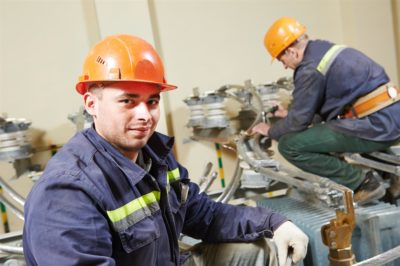The Five Most Common Workplace Hazards
All businesses, no matter what industry, market, or type, have certain workplace hazards that employers and employees alike need to be aware of to prevent accidents. Identifying hazards in the workplace requires determining what is and is not a hazard. From there, you need to place the hazard into one of the five main hazard categories, as follows:
- Biological Hazards
These types of hazards are those associated with things like bodily fluids, blood, bacteria, viruses, and so on. Mold, mildew, and fungus, as well as problems with insect bites, animals, and bird droppings, would also be considered biological hazards.
- Safety Hazards
Safety hazards refer to those types of things which could lead to potential accidents and injuries, such as:
- Slips
- Trips
- Falls
- Equipment Not Work Correctly
- Malfunctioning Machinery
- Improperly Trained Employees
- Electrical Hazards
- Working on Ladders, Roofs, and Other Elevated Areas

- Chemical Hazards
This workplace hazard is when there are solid, liquid, and gas chemicals used in the work environment with risks of exposure. Some common chemicals you might have in your facility are:
- Cleaning Products
- Insect and Pest Control Products
- Paints/Stains
- Glues/Sealants
- Solvents
- Gasoline
- Carbon Monoxide
- Petroleum Products
- Propane
- Acetylene
- Work Organization Hazards
This type of workplace hazard has to do with the day-to-day stress and demand one’s job can have on oneself. Exposure to high stress levels, excessive workload/deadline demands, and an intense, fast-moving work environment could all be deemed work organization hazards. Other hazards that fall within this category are:
- Sexual Harassment
- Discrimination
- Lack of Respect
- Violent Acts
- Loss of Control
- Unprofessional Social Relations
- Improper Work Attire
- Physical/Ergonomic Hazards
Physical and ergonomic hazards include those things that could cause potential physical injuries to employees. Some physical and ergonomic hazards you need to be aware of include:
- Exposure to Constant Loud Noise Levels
- Extreme Temperatures
- Exposure to Radiation
- Exposure to UV Sunlight
- Poor Posture
- Repetitive Tasks
- Improper Lifting
- Exposure to Constant Vibrations
- Chairs and Workstations Not Adjusted to Fit the Employee Correctly
- Frequent Sitting
Reducing Risks from Workplace Hazards

Once you have identified and categorized the hazards in your workplace, you will need to develop specific policies and procedures to address each one. For example, for problems with employees that are not adhering to a dress code, one of the easiest ways to remedy this is to select a work uniform that everyone can wear.
For concerns about biological hazards in employee bathrooms, you can make sure they are properly stocked with the right restroom products and cleaned on a frequent basis. For safety hazards, you will want to make sure employees have access to first aid kits, as well as the use of phones to call 911.
In addition to developing the proper policies and procedures, you will need to ensure each of your employees is trained correctly. Part of their training should include reviewing how to avoid workplace hazards. Their training should also cover what to do if they discover potential hazards, such as exposed electrical wiring on a power cord or an employee using a machine without safety guards.
By categorizing workplace hazards and educating your employees on what to do, everyone can help reduce and prevent accidents in the workplace. For all of your facility service products and work uniform rentals, please feel free to contact Prudential Overall Supply at (800) 767-5536 today!